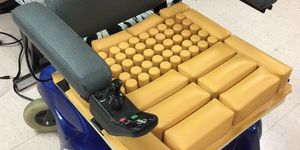Multi-Robotic Technology Offers Synchronized 3D-Printing
In Nanyang Technological University, Singapore (NTU Singapore), researchers created technology that can allow two robots to work in unison to 3D-print a concrete structure; it is a method of concurrent 3D-printing known as swarm printing. The new multi-technology research was led by Assistant Professor Pham Quang Cuong, who was responsible for the idea behind the IKEA Bot, along with his team at NTU's Singapore Centre for 3D Printing; their research was recently published in the top tier civil engineering journal, Automation in Construction.

Utilizing a special formulated cement mix suitable for 3-D printing, the new technology will replace conventional casting by producing unique concrete designs that were never before possible and on demand in a much shorter period. As of now, huge printers are needed for 3D-printing large concrete structures, these printers are often unfeasible. However, with new technology, having multi-robotic system that can perform synchronized 3D-printing of large architectural features is a breakthrough
"We envisioned a team of robots which can be transported to a work site, print large pieces of concrete structures and then move on to the next project once the parts have been printed," said assistant professor Pham Quang Cuong from NTU's School of Mechanical and Aerospace Engineering. "This research builds on the knowledge we have acquired from developing a robot to autonomously assemble an Ikea chair. But this latest project is more complex in terms of planning, execution, and on a much larger scale."
No new technology ever comes easy and challenges must be faced. In this case, printing concrete structures at the same time using two mobile robots was challenging due to the possibility of a collision
"This multiple robot printing project is highly interdisciplinary, requiring roboticists to work with materials scientists to make printable concrete. To achieve the end result of a strong concrete structure, we had to combine their expertise with mechanical engineers and civil engineering experts,” explains assistant professor Pham. "Such an innovation demonstrates to the industry what is feasible now, and prove what is possible in the future if we are creative in developing new technologies to augment conventional building and construction methods."
Watch this video below to learn more about the research:
Source: Nanyang Technological University








